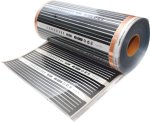Hello everyone, Im new here so go easy.... 
Is there a way to determine the equal mass or conductive material for expanded metal when AWG is referenced? We are embedding expanded metal as electrodes in a low temperature heating system (350F and lower) and are reviewing the UL standards. When AWG is referenced I am having a hard time crossing over the amount of material in expanded form to match that in wire form. Im sure this is a math calc, and as much as I love math I was never gifted at a high level. :weeping: For reference I posted a link below to an example of expanded metal. A strip approximately .5" wide of this material would equal ?? on the AWG scale
http://www.nilesexpandedmetals.com/nem/pdf/Aeromesh TPS CU195F.pdf
Is there a way to determine the equal mass or conductive material for expanded metal when AWG is referenced? We are embedding expanded metal as electrodes in a low temperature heating system (350F and lower) and are reviewing the UL standards. When AWG is referenced I am having a hard time crossing over the amount of material in expanded form to match that in wire form. Im sure this is a math calc, and as much as I love math I was never gifted at a high level. :weeping: For reference I posted a link below to an example of expanded metal. A strip approximately .5" wide of this material would equal ?? on the AWG scale
http://www.nilesexpandedmetals.com/nem/pdf/Aeromesh TPS CU195F.pdf

